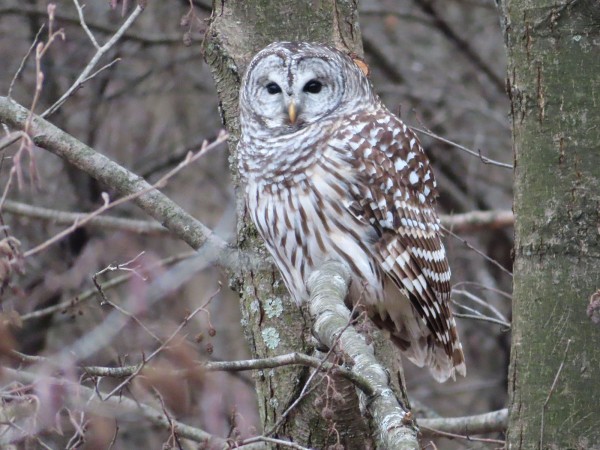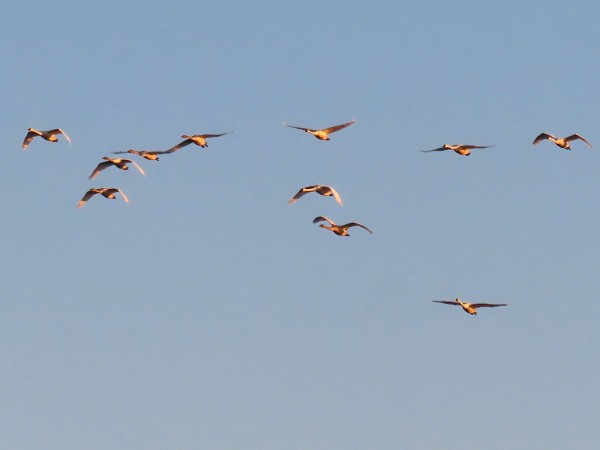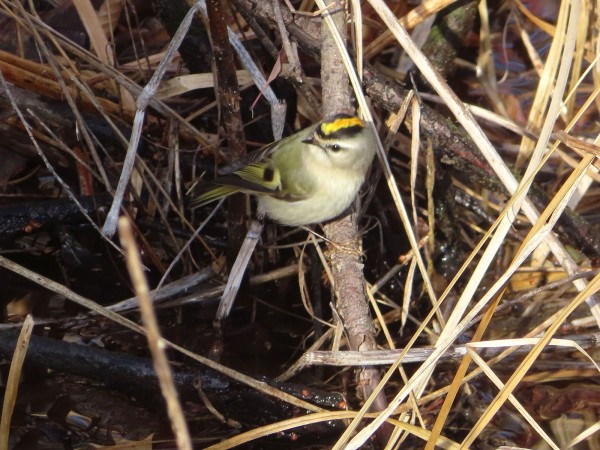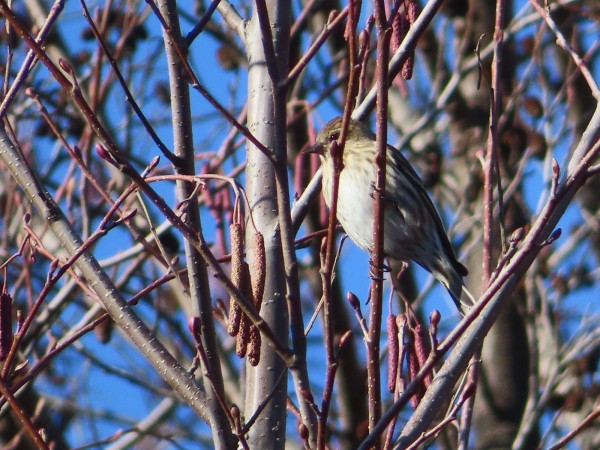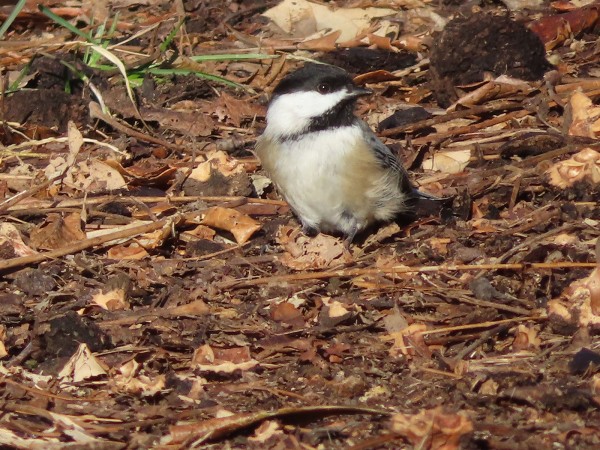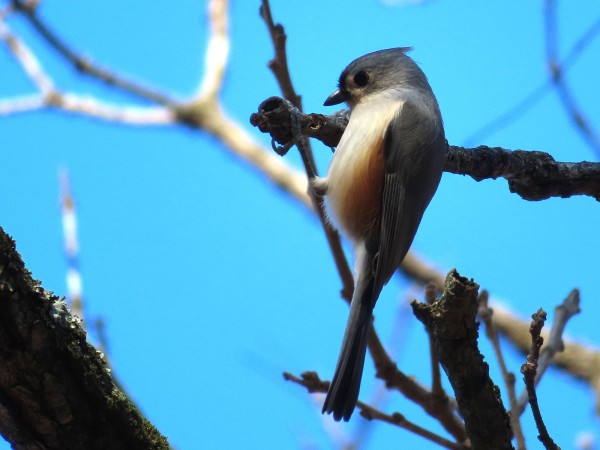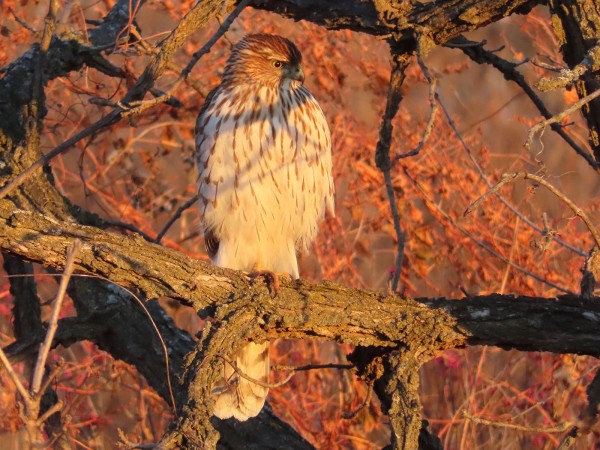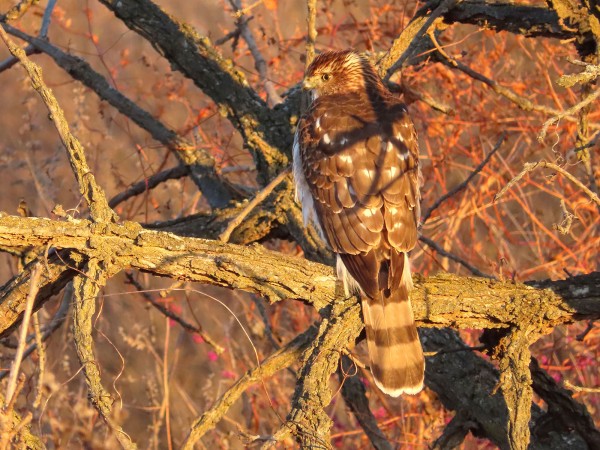Chuck's Birding Report #91
07 December - 13 December 2021
Dear fellow flock of birders,
On last Tuesday’s Bird Walk we had some good birds. We saw the Great Blue Heron down at Big Spring far out on the outflow. We also saw a Northern Shrike not on Curtis Prairie but in the Crabapple Collection. However the best bird we saw that day was a Barred Owl at Icke Boardwalk. Instead of perching in a Juniper at Juniper Knoll it was perched in a tree at Icke Boardwalk. We walked out on the boardwalk, looked to our right and there it was perched out in the open. It stayed for a good while so we could all get good views and take photos too. Thank you Mr/Ms Barred Owl. A photo of the Barred Owl is included.
On Friday and Saturday I saw flocks of Tundra Swans fly over the Arboretum. They were calling so I looked up and there they were. One flock had 30 swans while the other had 33. If you hear Tundra Swans calling, look around for a flock or two. You may get lucky. I’ve included a photo of a small flock of Tundra Swans flying over the University Bay in the early morning sunlight. If you want to see Tundra Swans and possibly Trumpeter Swans go to the west end of University Bay at sunrise on a clear day. The swans and other waterfowl are amazing at that time. I’ve included another photo of Tundra Swan on University Bay. Two Tundra Swans are just landing to join several other swans and ducks.
Last Saturday I had two great birds at Icke Boardwalk. The first one I saw was a Golden-crowned Kinglet. I don’t think I had seen one for 3 weeks or more. Kinglets are easy to pick out because of their constant, rapid movement. The next problem is to determine which species of kinglet it is. I look for the head. If it has a yellow or yellow and orange crow at the center top of the head with black bars on either side it is a Golden-crowned Kinglet. If it has a red crown with no black bars it is a Ruby-crowned Kinglet. This time of year the probability would favor the Golden-crowned Kinglet. I took lots of photos but, since kinglets move so fast all the time, I missed the bird completely most of the time. I did get a so-so photo which is included.
The other bird I found at Icke was one that I’ve been searching for, for about two months. This is a Pine Siskin. I look for them wherever I see European Alders. Pine Siskins eat the seed from the tiny pine cone like female catkins. This year the only birds eating those seeds have been American Goldfinches. I can eliminate those birds immediately because they are clean breasted. Pine Siskins have striped breasts. Well Saturday there were two small Pine Siskins with very fine pointed beaks and striped breasts. In past years I usually saw them in flocks of 5-10 but there were only two. They are late in arriving and maybe there won’t be many if there is enough food up north. Included is a photo.
Just after the snow the other day I saw several birds eating on the ground. I’m not sure why because these birds normally eat in the trees or on plants. One of my favorites is the Black-capped Chickadee. It continued to feed on the ground for several days after the snow melted. A photo of the chickadee is included.
Today was the best birding day one would ever want. I think tomorrow should be similar. The temperature started at 34 degrees at 7:30 and rose to 55 degrees by 11:00. The sky was clear, the sun was shining and best of all there was little to no wind. Wow, it doesn’t get much better than that! Birders like that kind of day but I think the birds do too. They are much more active on sunny days.
Late in the morning I was able to call in three Tufted Titmice with either rising whistles or a “Peter, Peter, Peter” call. They always perch right above me so they are difficult to photograph. Included is a photo of one Tufted Titmouse.
My last two photos are of a bird that was right next to my car when I arrived. It didn’t say anything but it did perch in a tree at eye level for a long photo shoot. The bird was a Cooper’s Hawk. It was bathed in the yellow of the morning sun. It was looking for food because it was constantly scanning the ground. It initially faced forward so I was able to get some shots of its front side. I asked the hawk if it would show its back side and especially show its tail. With my amazing control over birds (not) it shifted and perched so that it showed its back side or rear view. It was especially easy to see the black horizontal bars on the tail and the rounded tip of the tail. Photos of both sides of the Cooper’s Hawk are included.
That’s the bird report for the past week.
I wish you all good health and good birding too,
Chuck

